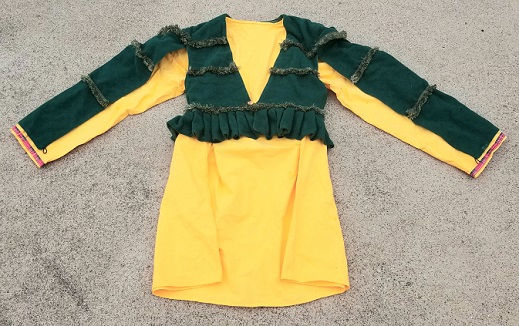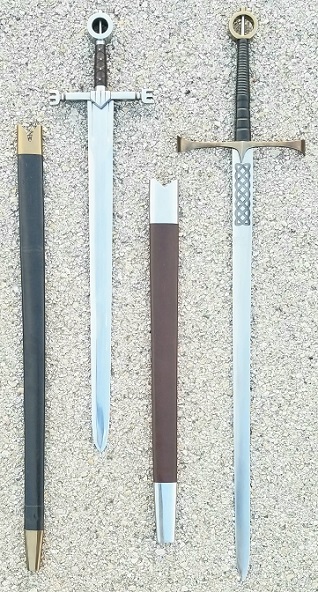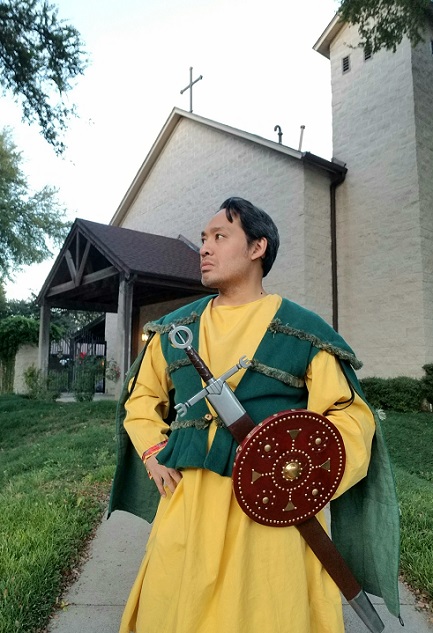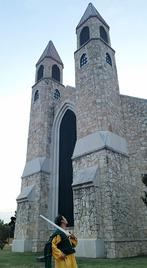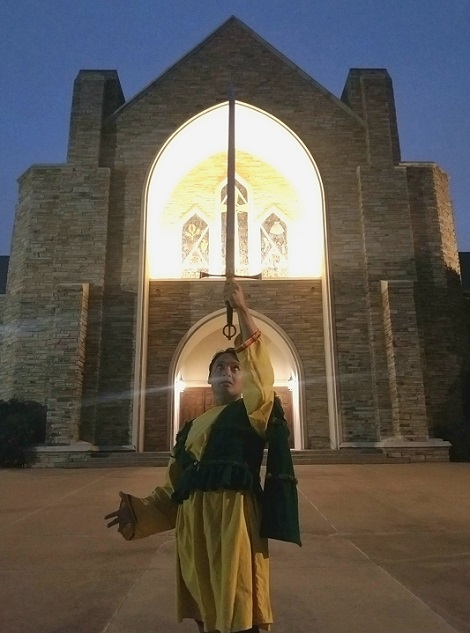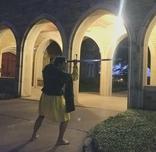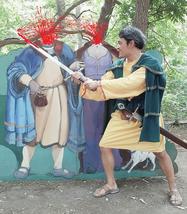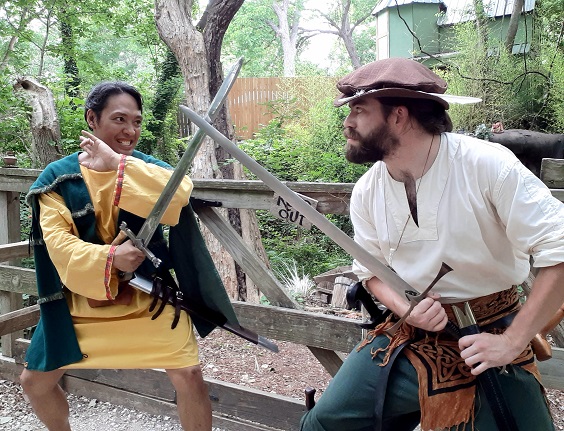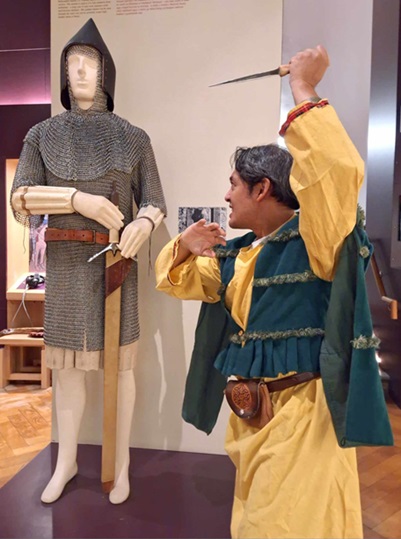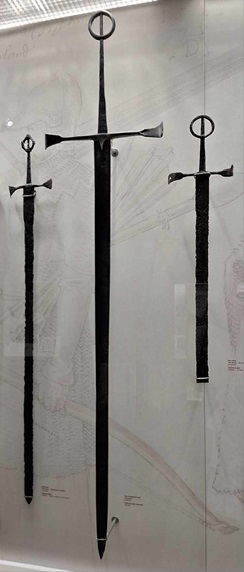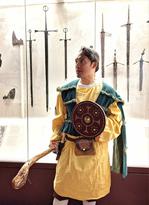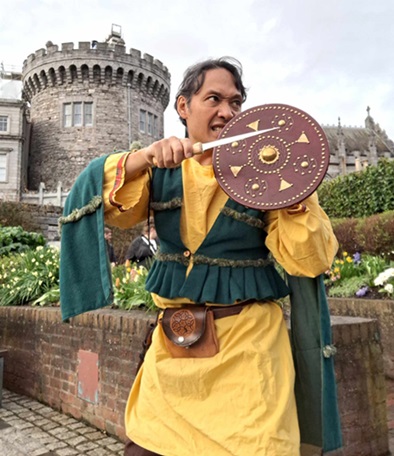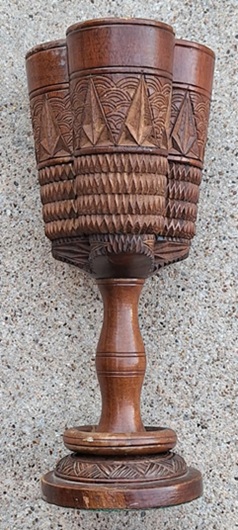Subject: ceithernach 'kern' light infantry skirmisher
Culture: Gaelic Irish
Setting: Ireland 15-17thc
Evolution:
Context (Event Photos, Primary Sources, Secondary Sources, Field Notes)
* Cannan 2011 online
"More a force of nature than a professional soldier, by Shakespeare’s time the ‘shag-hair’d crafty kern’ had mushroomed in the English popular imagination to become a figure of hate, a semi-mythic bogeyman lurking in the woods. From the point of view of an Irish lord, kern were a means to wage war, a means to overawe, a means to survive. Yet historians have paid them only passing attention.The word ‘kern’ is a phonetic rendering in English of the Irish ceithearn, meaning in a general sense a ‘war-band’ or ‘troop’ and having its roots in words signifying ‘battle’ and ‘slaughter’. From ceithearn we get ceithearnach for ‘trooper’. The ceithearnach was, however, understood to be a specific type of Irish soldier—he was the light infantryman of Gaelic Ireland, distinguished by his equipment and manner of fighting from the country’s two other major troop types, the galloglass and the horseman.
"Even a colonial administrator as hostile to the Irish way of life as Edmund Spenser could admire the stoical resilience of Irish kern, hailing them as ‘great endurers of cold, labour, hunger, and all hardness’, and ‘very great scorners of death’."
* Hayes-McCoy 1969 p108-109
"The men of military age within O'Neill's confederacy were, by 1598, 'all soldiers'; there was no longer a distinction between the aristocratic fighting classes and those who had formerly been prohibited by their low birth from bearing arms. Churls, horse-boys and their servile orders, as well as those ordinarily forming part of the rising out and classed as ceatharnaigh or kern -- the non-professional, part-time warriors in contradistinction to the galloglas -- were all trained to the use of weapons. 'These northern miscreants within these few years knew not what the due order of fighting was,' said a report of 1599, 'and now it is a professed art amongst the cowherds of Ulster.' Furthermore, these forces could gather 'their utmost strength from the remotest parts' in less than three days, whereas it would take the English more than three weeks to mobilise against them."
* Cannan 2011 online
"Rather than bodily defence, ‘skipping kerns’ (Shakespeare, Macbeth) relied on speed and surprise to see them through. When it came to battle, kern would make a sudden rush on the enemy, bellowing war cries, pipes blaring, pitching their darts, before setting to work with broad-edged sword and dirk. If the enemy held his ground, the kern’s effectiveness was liable to wane. Principally irregular skirmishers rather than field infantrymen, kern had limited staying power in the face of missile fire or sustained assault. For this reason it was, says Camden’s Britannia, the heavily armed, axe-wielding galloglass who were commonly ‘set in the rearguard’, providing much-needed ballast to the darting waves of kern and horsemen. But when it came to ambushes, raiding, reconnaissance work and the murky, scrappy techniques of inter-clan warfare, the ceithearnach was absolutely first-rate."
* National Museum of Ireland -- Decorative Arts and History > Soldiers and Chiefs - The Irish at War at Home and Abroad since 1550
"Kern: a term for an Irish foot soldier of the lower orders; often he fought out of duty to his feudal lord
Ceithernach: a thugtaí ar choisí Éireannach den íosaicme; ba mhinic a throid sé mar dhualgas ar son a thiarna feodaigh."
* Hurley 2007 p183 n15
"... Kerne [were] lightly armed, native Irish mercenaries ...."
* Gresh 2023 p82
"kern: Light-armed Irish foot soldier of the medieval and Tudor eras"
* Wild Irishe 2022-08-31 online
"Of the various written descriptions of Gaelic Irish military types that we possess, the one most pertinent to this discussion is by the Dubliner Richard Stanihurst in his 1584 publication, De Rebus in Hibernia Gestis (Great Deeds Done in Ireland). A history of the Anglo-Norman invasion of 1170, it includes in ‘Book I’ descriptions of the 16th century Gaelic Irish. Stanihurst was a Catholic, but as a Palesman his unfavorable portrayal of the Gaelic Irish infuriated his fellow countrymen of Gaelic background. Stanihurst would eventually relocate to Spanish Flanders, becoming a Catholic priest and alchemist. His book had been prohibited by the Church at the insistence of influential Gaelic refugees on the continent, and he moderated his views in later life. So, in addition to bearing in mind his not entirely friendly attitude towards the Gaelic Irish, we must also recall that he wrote in very erudite Latin, employing phrases from Classical texts wherever possible to display learning. Here is a translation from Latin of what he says of the kern:
“'The third rank comprises others, also foot soldiers, who are light-armed swordsmen [Machairaphoroi: i.e., a type of ancient Seleucid light foot, unarmoured, fighting with sword, shield, and spear]. The Irish call them Kerns [Karni]. They whirl spears, which are fitted with thongs, so manfully by strength of muscle that the spears seem to be forced into an orbital circuit like a ring. They are armoured with shields [Caetra—i.e, the circular wooden buckler, leather covered, of the ancient Celtiberians] or an iron gauntlet; going into battle they wear no heavy armor. With spearpoint, they inflict wounds from afar on horseman and horse; then at close quarters they enter the fray with drawn swords. They are notable stone-throwers, but they have no knowledge of how to use their weapons in a well-trained manner: they have no familiarity with the art of the fencing schools, rarely piercing the foe with a thrust, more often wounding him by slashing. They have an amazing love for their swords, which are kept sharp and not pitted: they care for them diligently so that they may not become rusty or blunt. The story is told that a man of this class, returning from battle having received four or more dangerous wounds, inspected his sword: when he saw that it was nowhere chipped or bent he gave great thanks to God that the wounds were inflicted on his body, not on his sword.'
"Note the following points from this account:
Sword
* Melville 2018 p69-70
"[A] smaller number [of Irish swords] of a peculiarly Irish form which has not been found outside Ireland. The peculiar characteristics of this form are: a hollow ring pommel, bisected by the tang which protrudes encased in a tang button well beyond the edge of the ring; a straight bar crossguard which expands into fan- or shovel-shaped terminals which are frequently curved in opposite directions horizontally; and usually a langet, short or long, narrow or broad, extends down the blade from the quillon block. These are all single-handed swords of the fourteenth and fifteenth century, but a two-handed version was made in the sixteenth century in an identical style -- with open ring pommel, wide, straight quillons ending in horizontally counter-curved shovel-shaped terminals, and modest langets extending down the blade. There is an example in excellent condition in the National Museum of Ireland in Dublin, and also a drawing by Albrecht Dürer, dated 1521, in the National Gallery of Ireland, of a very similar, but much larger, sword carried by one of a group of 'Irish Soldiers'. The Dublin sword is the only one of its type known to me (although two others apparently exist in fragmentary condition) and at an overall length of only 124.5cm (blade 96.5cm) should perhaps be regarded as of 'hand and a half' size. It is, however, noticeably larger than the single-handed swords in the case alongside it."
* Wild Irishe 2022-08-31 online
"... Professor G. A. Hayes-McCoy ... would provide the first systematic description of the Irish ring pommel swords in his booklet, Sixteenth Century Irish Swords in the National Museum of Ireland, Dublin, 1959. The type is very homogeneous and forms ‘Group 3’ in Andrew Halpin’s later analysis of Medieval Irish swords. All those of known provenance have been found in Gaelic areas. The blades were imported from the major blade making centres in Europe, and while Hayes-McCoy thought most of them were German, they seem to have been brought in by Spanish and French traders. The swords were hilted locally by Gaelic Irish smiths. They appear to willfully eschew the trend towards more complex hilt types occurring elsewhere.
"The ring pommel is not uniquely Irish but, combined with counter-curved spatulate quillons, it constitutes a characteristically Gaelic Irish type. In fact, the ring pommels of three swords of the British regalia (the Swords of Mercy, Temporal Justice, and Spiritual Justice) all bear an octagonal ring pommel very comparable to those seen on both the Tully Lough sword (national museum #39-1905) and a recently discovered Group 3 example in private hands. This very well preserved surviving example of a ring pommel sword has a “double-edged blade of stiff, thick construction which appears to be parallel-sided but in fact exhibits an almost imperceptibly slight taper, being 3.2cm wide at the hilt and 3.0cm a little distance from its spatulate tip. The ricasso extends for 8.5cm from the hilt, beyond which the blade is of lenticular section.
"Dating is difficult, but based on surviving iconographic evidence, the Group 3 is roughly placed in the second quarter of the sixteenth century. Of course, its use might plausibly extend some decades before or after that time-frame. The earliest depiction of the Irish ring pommel is in Albrecht Dürer’s famous drawing of the ‘War Men of Ireland,’ dated 1521, and showing a curiously large specimen. The equally well known series of drawings by Lucas DeHeere—and their derivatives in Continental costume books—indicate its use by the levies of kern sent to France in 1544. At least, this still remains the best hypothesis for the origin of this series of closely related images. This idea of their genesis was first posited by H. F. McClintock, who included the ‘Dravne After the Qvicke’ woodcut, which he suggested was cut after a life drawing probably made while the kern were passing through England on the way to Boulogne. McClintock suggested that ‘Qvicke’ and the DeHeere series all derive from a set of originals made at that time, and I find this still the most plausible theory. Notably, all the images that we have show the ring pommel sword in the hands of the kern, or light-armed Irish foot. This type of sword never appears on lordly funeral monuments, and by the 1570’s Derricke’s Image of Ireland and the Dublin Charter galloglass seem to show the Gaelic Irish using a sword with closed disc pommels and downward-curved quillons, not unlike the more Anglo-Irish type represented by the so-called Kinsale sword.
"(It should be noted that the dozen surviving open ring pommel swords of Halpin Group 3 may have no greater claim as a characteristic Gaelic weapon than the thirteen surviving ‘V-guard’ swords of Halpin Group 2. These ‘photo-claymore’ single handed swords of Group 2 straddle Highland Scotland and Ireland, are dated to the late fifteenth/early sixteenth century, and appear on funerary monuments in both countries in the hands of high-status warriors and galloglass. Their appearance on the effigies of Malachy MacOwny O’More in Laois (1502) and a MacGillapatrick knight in Kilkenny (1510-40) confirms this, and the type seems to overlap our Type 3 open pommel swords chronologically. They are thought to give rise to the claymore proper later in the century.)
"So we can say that the Halpin Type 3 open ring pommel sword is part of a ‘weapon set’ used by the Gaelic Irish kern in the first half of the sixteenth century. This weapon set also featured the Irish dart or throwing spear, the skean (scian) or long fighting knife (either alongside the sword or in place of it), and limited defensive gear (wooden target, steel ‘lyft gauntlet’ or scull)." [references omitted]
* National Museum of Ireland -- Archaeology > Medieval Ireland 1150-1550
16th century swords These swords have distinctive hilts with open ring pommels. They are known only in Ireland and were used by Irish warriors in the 16th century. Both single-hand and larger two-handed swords are known."
* Heath/Sque 1993 p
"
Costume
* MacCall 2019 online
"The Irish foot soldiers of this period were the ceitern, usually anglicised “kernes.” In the oldest Irish dictionaries the singular noun “ceithearnach” is defined as “a soldier, a sturdy fellow.” This double definition is in itself a tribute to the men who, from the time of Art MacMurragh Cavanagh to the “Flight of the Earls,” fought Ireland’s fight against outside aggression. Their very distinctive dress had as its main feature a long, full shirt, saffron in colour. It was worn gathered up at the waist by a girdle, or belt, so that it did not reach below the knees. And since its fullness gave to it the appearance of a kilt which is worn today by our Army pipers.
"Some of these kernes were armed with skeans and long spears, others carried light axes, and others again carried two or three throwing spears and a short bow. Their only defensive equipment was a helmet and, occasionally, a hide – covered wooden shield not more than two feet in diameter. Other notable features of their uniform were the long baggy sleeves of their shirts, and the short coat with its half – sleeves and ruffled waist.
"An English official, writing to Henry V111 in 1543, expresses his surprise that the kerns should be so “hard to be beaten,” having no defensive armour, “but only their shirts and small coats.” When Shane O ‘Neill paid a visit to Queen Elizabeth he caused some consternation in English circles by taking with him an escort of these kerns. The rich saffron colour of their great shirts was much remarked upon by the Queen’s chroniclers."
* Cannan 2011 online
"Kern did not, of course, go into battle naked. For a start, a loose tunic, often saffron-coloured during the Tudor period, was typically worn, sometimes with a short coat. For warmth, a kern wrapped himself in a shaggy cloak or brat. We know that kern used shields; pictorial sources suggest, too, an occasional use of helmets and gauntlets, and Jean Froissart (c. 1337–c. 1410) includes a description of the Irish wearing ‘very simple’ armour (perhaps leather or fabric forms of protection). But to an English man-at-arms encased in iron plate this lack—or very minimal use—of metal armour would have amounted to ‘nakedness’."
* Barsis 1973 p201 (describing 'Wild Irish' country folk, Ireland early seventeenth century)
"Not much has changed in the costume of the Irish since Albrecht Dürer drew it at the beginning of the sixteenth century. The saffron shirt and the blanket, which also served as a cloak, were two of the most important elements. In this drawing, ... the man's is patterned wool with a fringe. Since the weather is cold, the man has pulled soft leather stockings over his tight leggings. ...
"This costume was taken from the figures decorating Speed's map of Ireland, published in 1610. At about this time English costume was enforced in Ireland and Irish dress began to decline."
* Durham/McBride 1995 p46 (describing Ireland, 1576)
"[T]he Galloglass was usually backed up by Kerns and footsoldiers. ... [A] Kern ... sports a 'glib' hairstyle -- peculiarly Irish and outlawed by the English -- and wear a full, saffron dyed shirt gathered at the waist. The Celtic designs on his short doublet further emphasise his Gaelic origins. Fighting barefoot, he is armed with a crude light polearm."
Shield
* Wild Irishe 2022-02-08 online
"Gaelic Irish shields in the 16th century seem to have been of two distinct varieties. The general word for shield, sciath, was originally applied to the most ancient form, an oval, concave wicker shield. Round, flat targets of wood, covered with leather and studded with brass nails, were known as starga, or targaid. As with so many cultural traits, this distinction between two types of shield is mirrored in Highland Scotland."
* Hurley 2007 p172
"Contemporary medieval illustrations of professional Irish soldiers, depict them with a sword and a conspicuous left handed gauntlet. This suggests to me that even medieval Irish warriors were using the left hand to deflect blows and grab their opponents weapons [SIC] and that this tactic probably survived into the Irish shillelagh fighting of the nineteenth century. ... [T]he 'Irishness' of this technique was discussed by Edmund Spenser in his book A View of the Present State of Ireland. Spenser advised that the Irish cloak or 'mantle' should be outlawed for various reasons including he says, the fact that, with regards Irish swordsmen called 'Kerne':
"'... often times their mantle serveth them, when they are nigh driven, being wrapped about their left arm instead of a Target, for it is hard to cut through it with a sword.'"
Dagger
* Wild Irishe 2022-08-31 online
"[T]he skean (scian) or long fighting knife [was used] either alongside the sword or in place of it" .....
* Gresh 2023 p83
"scian: In Irish, a knife, but historically often designating a fighting knife and spelled 'skean' in English"
"scian fada: In Irish, a long knife, specifically a long-bladed version of the skean"
"skean: Generally accepted English spelling of the Irish term /scian, a knife"
* National Museum of Ireland -- Archaeology > Medieval Ireland 1150-1550
"Daggers Daggers of various forms were common from the 13th century. Imports such as 'Burgundian' and 'Maximilian' daggers probably belonged to wealthy persons, but most daggers are simpler. 'Ballock knives' (called after the phallic shape of the hilt) were common in England as well as Ireland. Late medieval Irish footsoldiers used long, single-edged daggers known as skeines (from the Irish scian, 'knife')."
Dart
* Gresh 2023 p82
"dart: A short throwing spear, with or without flights, and characteristic of the Irish kern"
Cup
*
"
